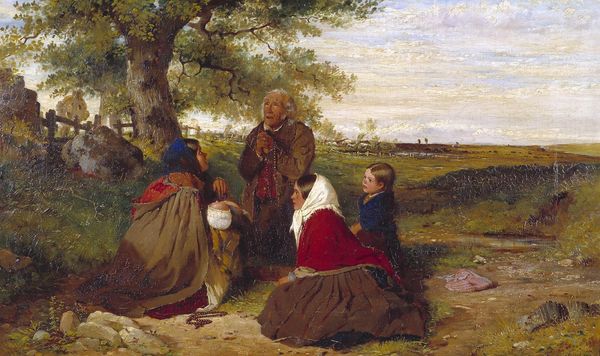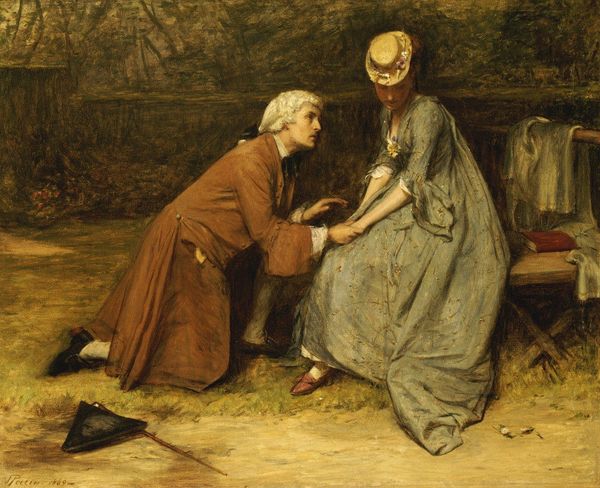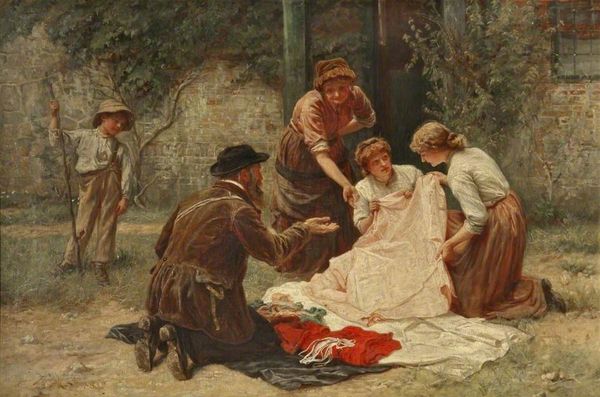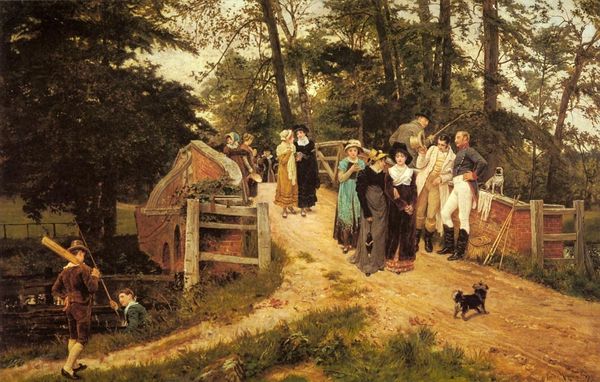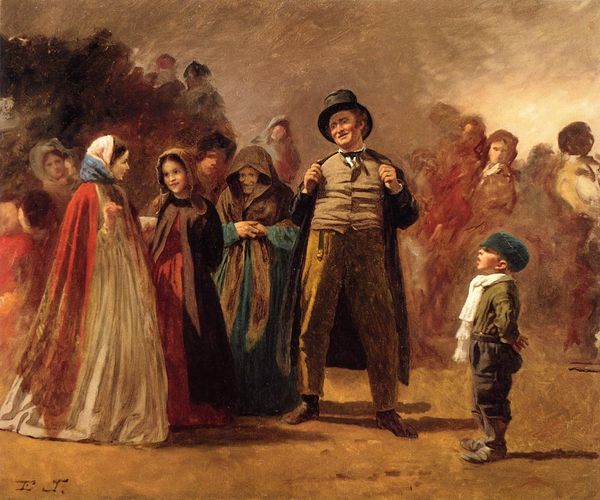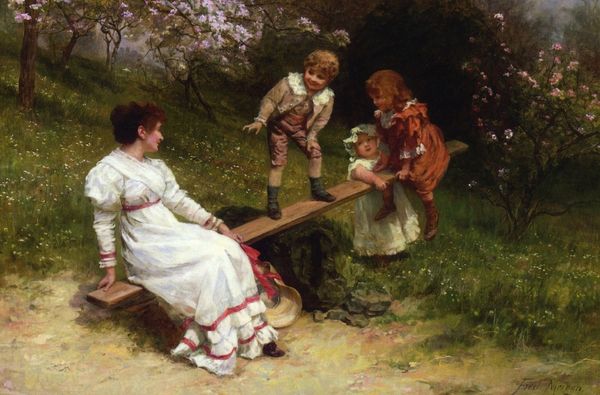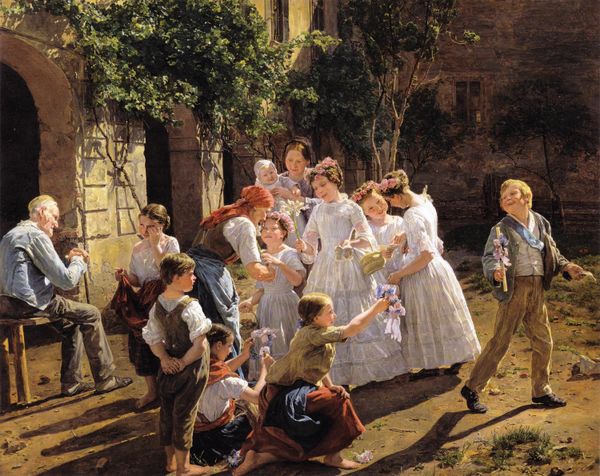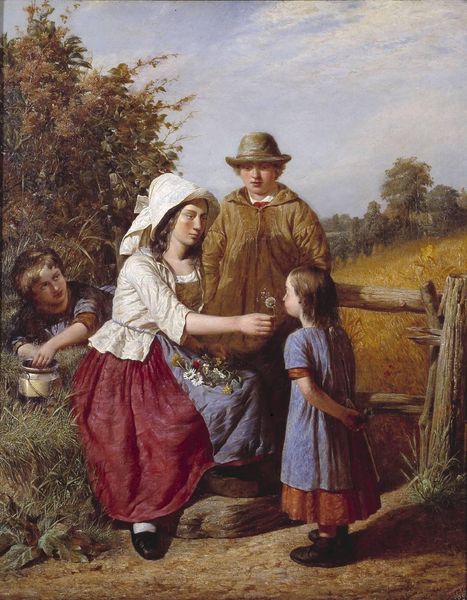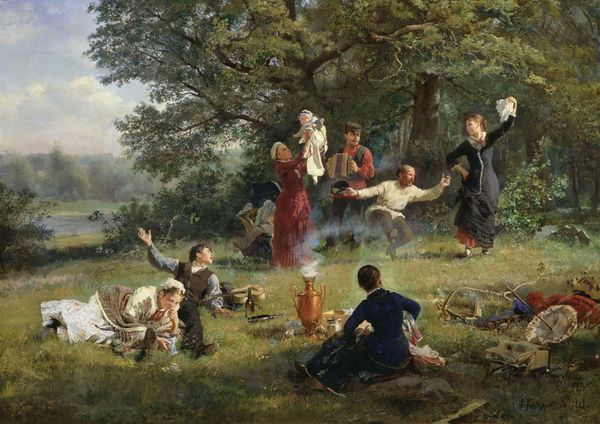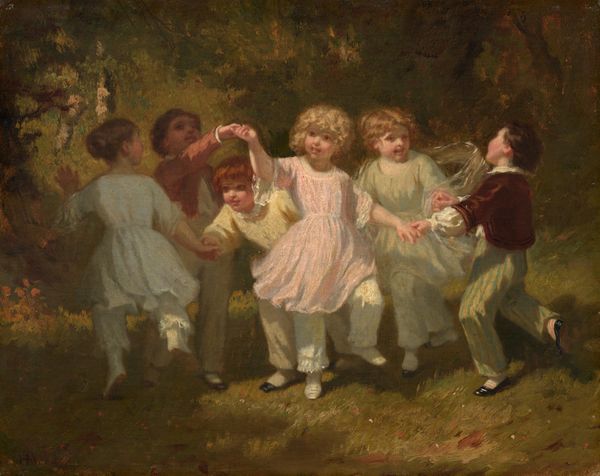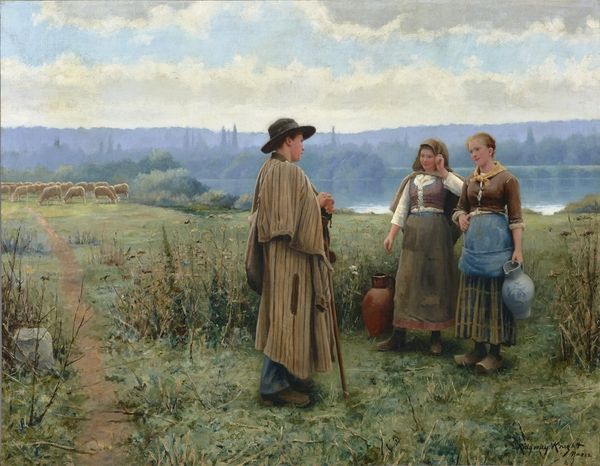
Dimensions: 109.2 x 155.6 cm
Copyright: Public domain
Curator: Oh, my goodness, a cortege shrouded in shades of grey and grief. The scene is drenched in such melancholy; it feels like walking through a particularly heavy dream. Editor: Here we have Frank Holl’s "Her First Born, Horsham Churchyard," painted in 1876. It's a powerful, unflinching depiction of bereavement set against a rural backdrop. Curator: You know, I almost wish it were less literal. It's all a bit on the nose, isn't it? I find myself wondering about the faces hidden in shadow, what stories do they hold beyond the immediate sorrow? What lives have they lived? Editor: Exactly. Holl became well known for genre paintings that dealt with social issues, frequently using the landscape as a commentary on social change and the personal impact of larger historical forces. In this case, death was a recurring theme that resonated profoundly with the Victorian public, grappling with high infant mortality rates and rapidly modernizing urban landscapes. Curator: Death touching everything, even childhood. And it's like Holl forces you to witness it, almost like we are intruders in the mourning ritual. I keep drifting toward the way those children’s bonnets obscure their faces, giving a sense of lost innocence... like ghosts already. Editor: These scenes gained enormous popularity through illustrated magazines of the period. Mass media shaped artistic representation, focusing on sensationalist themes like the idealization of rural life or social deprivation of the time. "Her First Born" thus became an emotionally charged vehicle to discuss grief, poverty, and collective anxiety in the late 19th Century. Curator: I suppose the painting is less about a singular death and more about a universal mourning, made marketable by the popular press? That changes everything, really. All this public spectacle made of a moment that screams for privacy! Editor: Yes, perhaps this reframing lets us consider our current fascination with tragic media spectacles and collective grieving rituals today, prompting necessary conversations around cultural values and the politics of representing loss. Curator: Oh, precisely. It leaves you a bit speechless, really, just pondering what resonates across the centuries and what we risk losing along the way.
Comments
No comments
Be the first to comment and join the conversation on the ultimate creative platform.
